
I've started cutting back the Bartlettina sordida growing under the deck. It needs a good pruning after the flowers fade to keep it in check. This is a good "shrub" (I guess it's a shrub) for very coastal gardeners in frost-free zones, or anyone in San Francisco. The rest of you probably not so much. I wouldn't plant it anywhere very windy either.

Fuchsia boliviana is the big thing now. Also good for anyone in coastal areas.
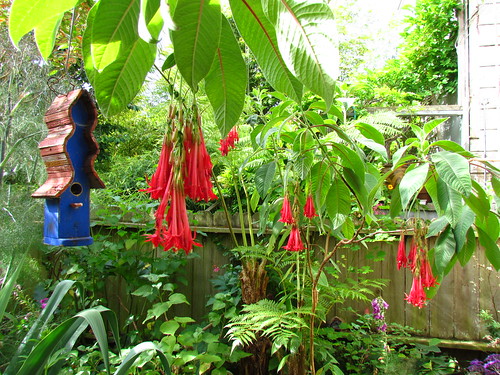
After the flowers, it makes heavy berries you can snack on. Berries on the red F. boliviana (as opposed to variety 'Alba') turn a very dark red-black. I try not to eat these since they look so cool hanging there in big, long clusters, almost like grapes.
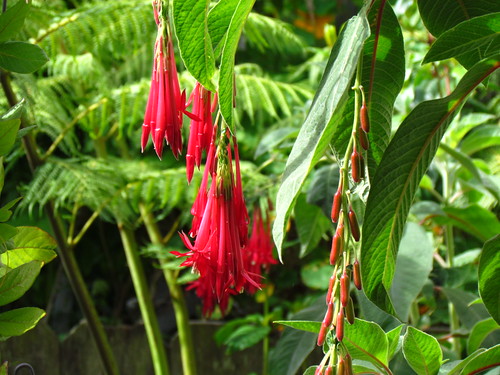

Speaking of red-black, I'm trying Papaver commutatum 'Ladybird' this year after seeing it at the San Francisco Botanical Garden awhile ago and planting some in my neighbor's garden. I would add a couple more of these if I could figure out what to remove.
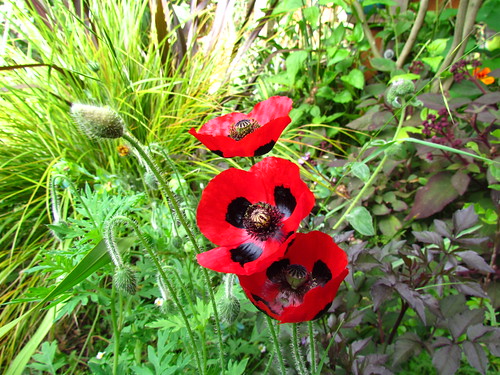
But I don't see anything I want to remove.


I'd add some more perennial foxglove too. This is Digitalis x mertonensis. Of the perennial foxgloves I've tried, this one is my favorite. It flowers over the longest period for me and is more pretty than Digitalis ferruginea. Not that it's always about being pretty.
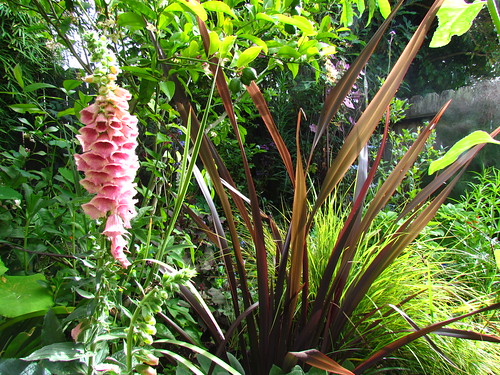
When you read or hear garden advice telling you to keep mature sizes in mind when you choose plants for your garden, it turns out that that's good advice. Things actually do get big. I have more than a few plants that are too big for my space. Fortunately, I'm a very willing and able pruner. In some cases, I think is sufficient, but other cases maybe not so much.

Aaanyhow. Asclepias fascicularis, a Calif. milkweed I planted a couple years ago is doing really well after not doing much of anything. Seems to be spreading itself around a bit too, which it is certainly welcome to do. I'd hoped it would attract some monarch butterflies. Maybe soon.

The main thing I have for butterflies is this bronze fennel (three clumps of it, actually) that has anise swallowtail caterpillars feeding on it all summer long. I like the wispy dark foliage and the fragrance as well. In fact I love the fragrance. I've complained about rarely seeing the actual swallowtail butterflies, but this year so far I've seen three.

Here's a close up of that orange poppy on the right. I do not remember anything about this plant, but it was here last year too. I think late rains must have knocked it out before it could make seed. Because here it is again, and I definitely did not plant it this year. I wonder if I got this seed from the CalHort seed exchange and decided to just throw it around. How often does that approach work out? Not very often.
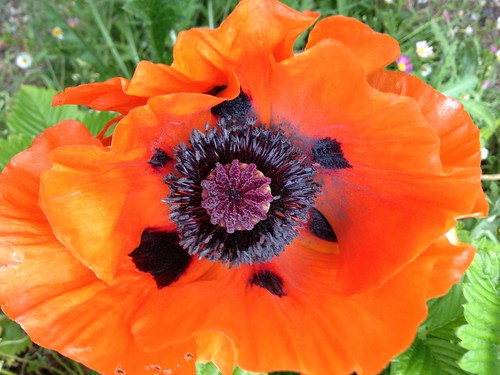
Dark-leaf dahlia 'Bishop's Children' tubers (technically tuberous roots) I grew from seed a few years ago got planted out last fall. They're coming up strong. Note: if you want to try growing things from seed, dahlias are a fine place to start. Germination rates are good and since the plants are dormant half the year, they only require your attention for half the year as well. You have to nurse them along in pots for awhile.
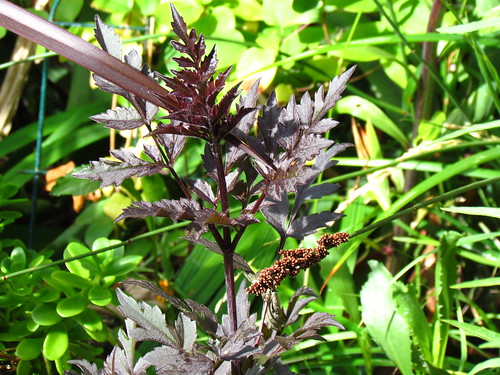
The flower colors vary greatly along the yellow-orange to red-purple color axis, so you could end up with something special. The 'Bishop's Children' variety have dark leaves, and come to think of it the leaves vary greatly too. I have a couple that make rather finely dissected leaves for a dahlia. Designers are always telling you to pay attention to foliage and vary leaf color and form. That's good advice too.
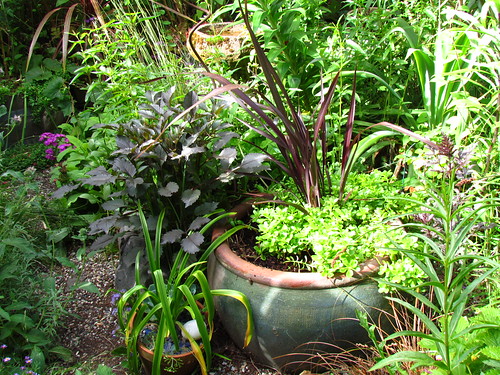
This time last year, late rains knocked out the Carpenteria flowers. This year it blooms. I prune this one every year too. In other gardens I've seen, this plant does well left alone, but in mine it needs some help with shape. And the dead leaves hang on forever. I cut them all off.
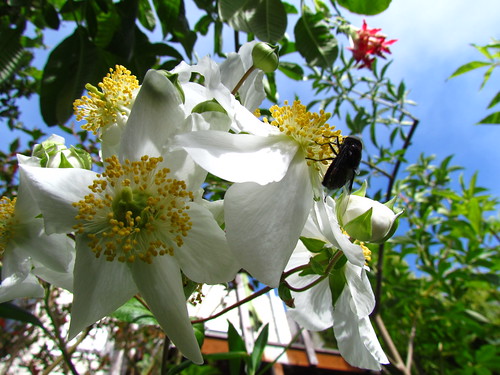
This campanula does well in the shade at its feet. I've tried other things but this is what took.
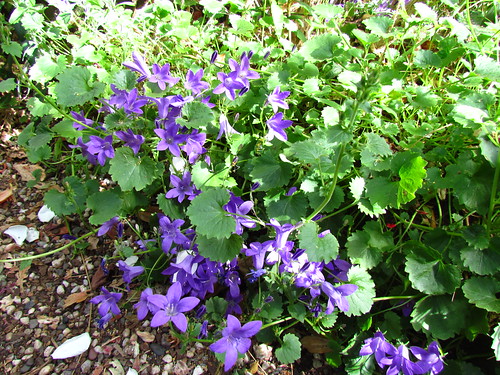
I have a lot of wild ginger (Asarum caudatum) from the coastal redwood forests in the shady part of the garden. It makes this groovy flower, but you have to go looking for it. They are close to the ground where I guess some creepy-crawly pollinates it.
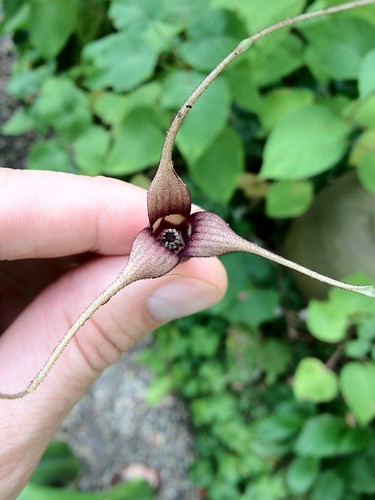
My Roger's Red isn't doing very well this year (not shown). Usually by now it has put on a few feet of new growth. This year, hardly any. Very distressing. Naturally, I'm wondering what's going on. Could the weedy nasturtium be robbing it of nutrients underground? Is it possible to bully a grape vine? I wonder. Usually grapes are so vigorous many people regret planting them. I decided to water.
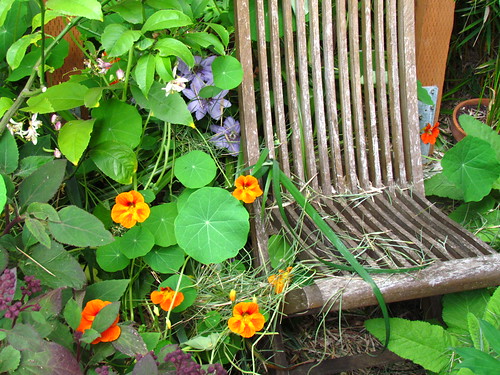

5 comments:
The orange poppy is Papaver orientale so it is a perennial that goes dormant after it blooms. They need colder winters to be really spectacular but are still pretty awesome.
If it's really Papaver orientale, then I am back to being confused where it came from. I know I got P. somniferum from CalHort, but I have no memory of P. orientale. Oy!
I guess I'd assumed all the papaver were annuals.
I wish I could get a grape that would be vigorous enough to make me regret planting it. I've owned at least four of them now, and the current one is the only one that has reached four feet long. It grew very quickly when I first planted it a few months ago, but now it seems to be slowing down.
Your garden has really matured over the years, it's so lush and pretty!
Post a Comment